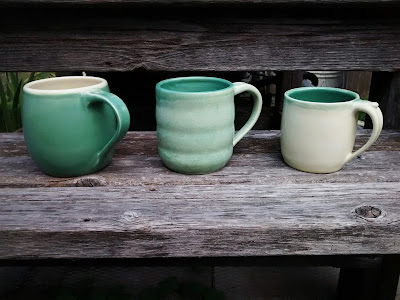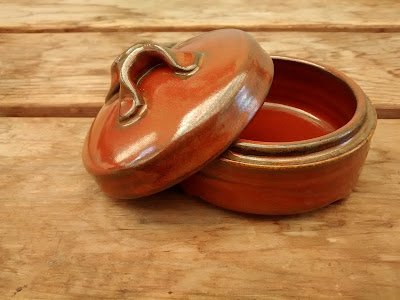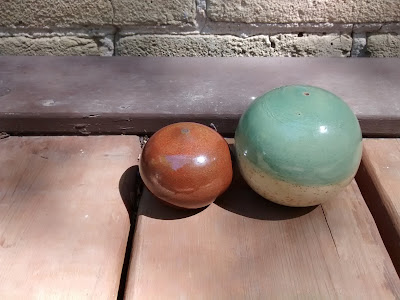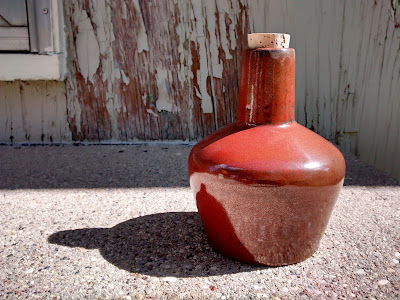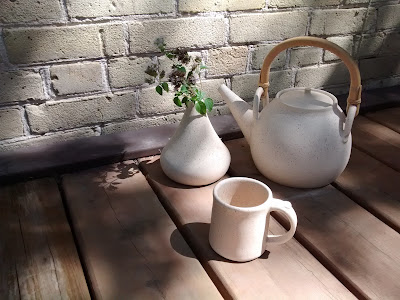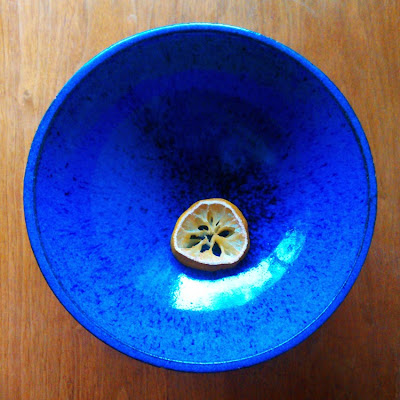This commission was a challenge. It took 20 hours and 4 separate firings. The order was for a pair of all black, all purpose, double walled mugs. They were designed to have a 2mm wide thermal break between the inner and outer walls. The dimensions of the cups were specific, to the millimeter.
I started by throwing the base and hand-building two separate walls (inner and outer).
Balloons were inserted during the initial sculpting and drying process, to ensure that the forms be as close to cylindrical as possible.
Miscalculating the shrinkage and drying rate of the clay, I ended up with an extra large, cracked version of Litovitch's design. It went to recycling and I was back to square one.
Attempt number 2 involved the making and casting of a plaster mold. The plan was to throw a master cast on the wheel, make plaster molds of them, then cast them using casting slip. At least, that was the plan... The masters were handthrown and the slightest undercuts caused the inner volume of the mold to break off. Fortunately, what remained of the mold was still useful.
The clay casts were removed from the plaster forms, hand assembled and carved, dried, bisqued, covered in sikora black cone 6 glaze, and fired. After the first glaze fire, one of the cups had a very small patch in the inner volume that had resisted the glaze. This required me to dab some extra glaze over the bare spot and refire to cone 6. I refired the pair of them because a second firing often changes the appearance of glaze and I wanted to make sure both cups would have the same finish.
R. Litovitch has requested that these all-purpose cups be named "wiika" cups (pronounced wee-kah). The name is inspired by the aboriginal name for the Calamus Root, Ryan's favourite root.
Thank you Ryan for this original design!







